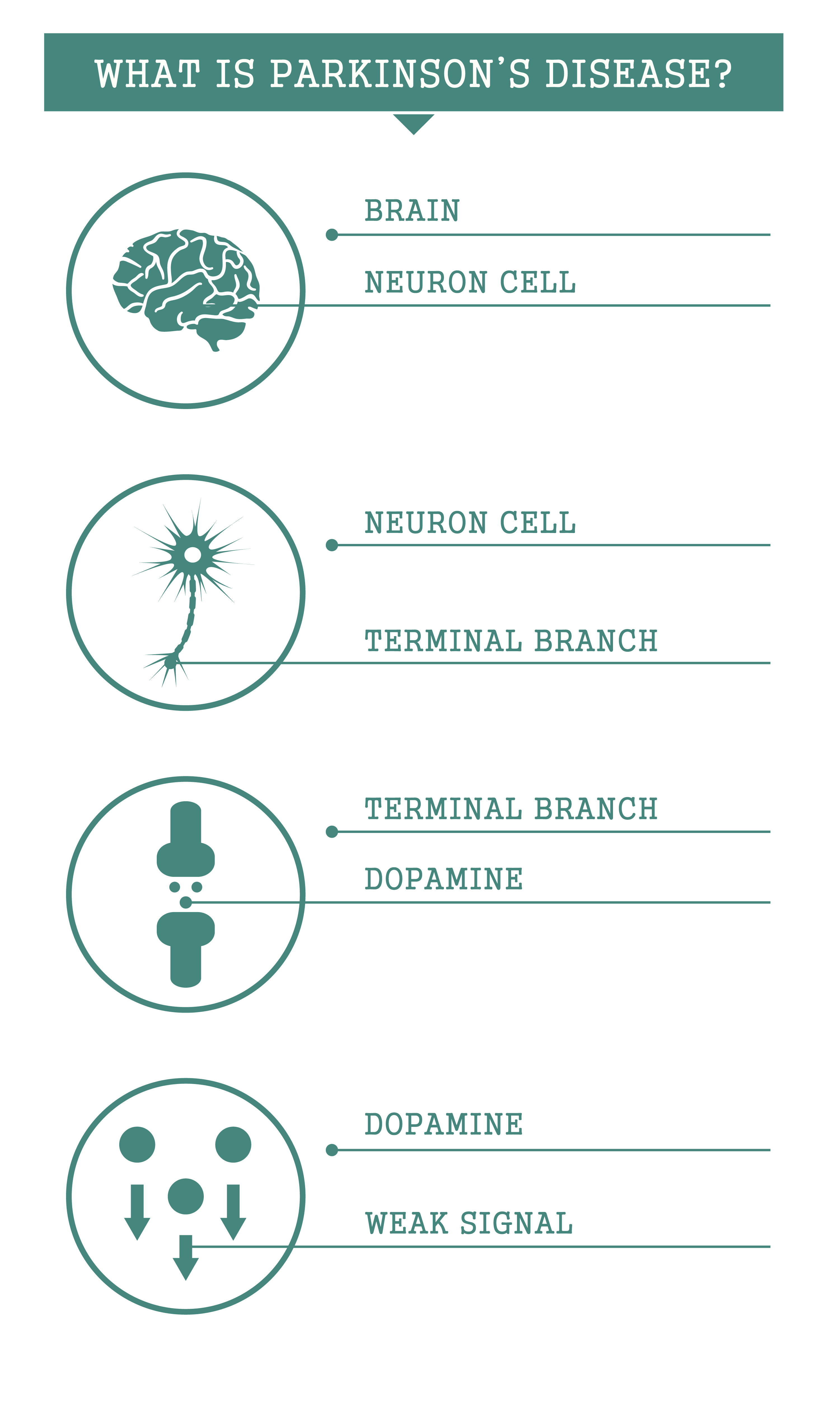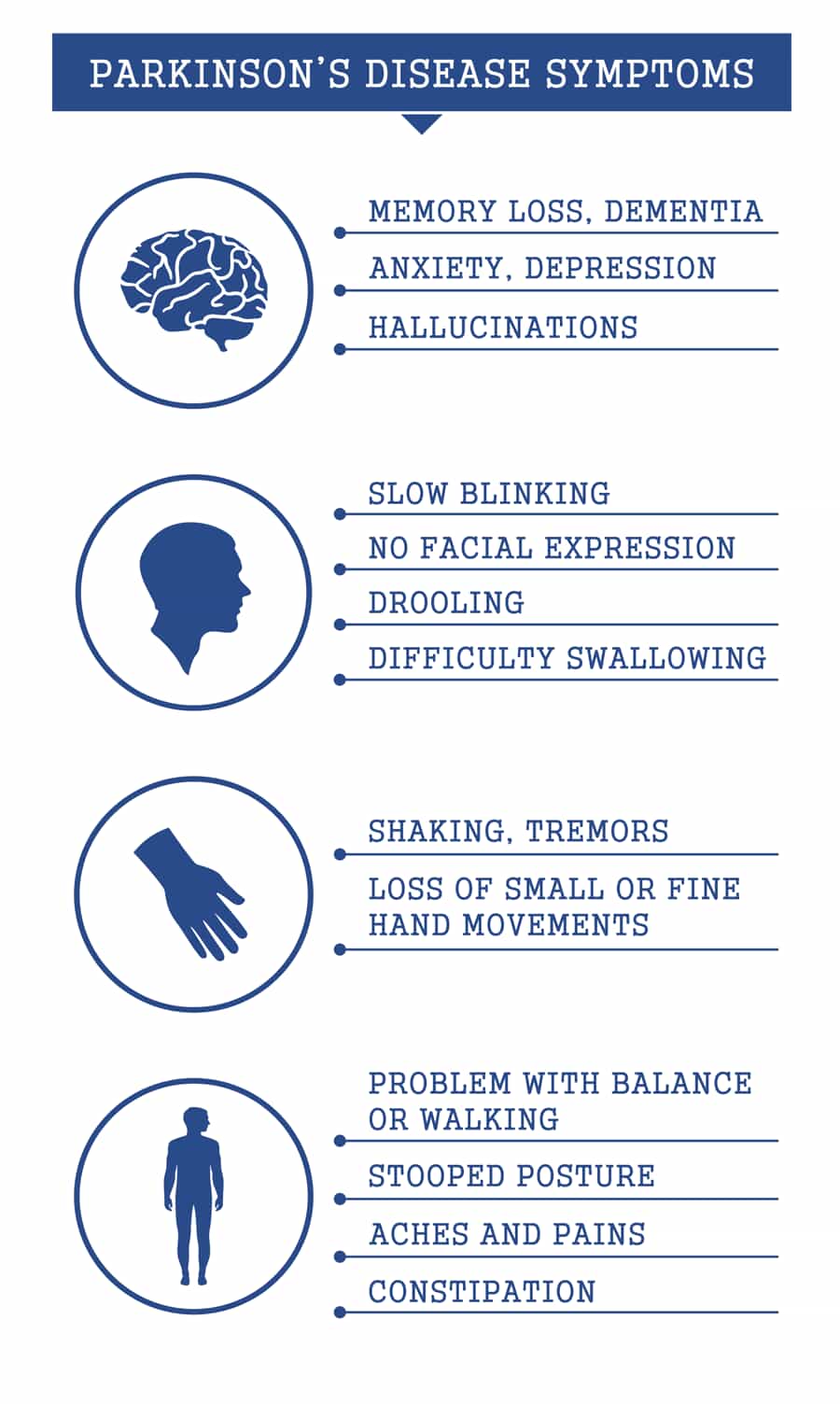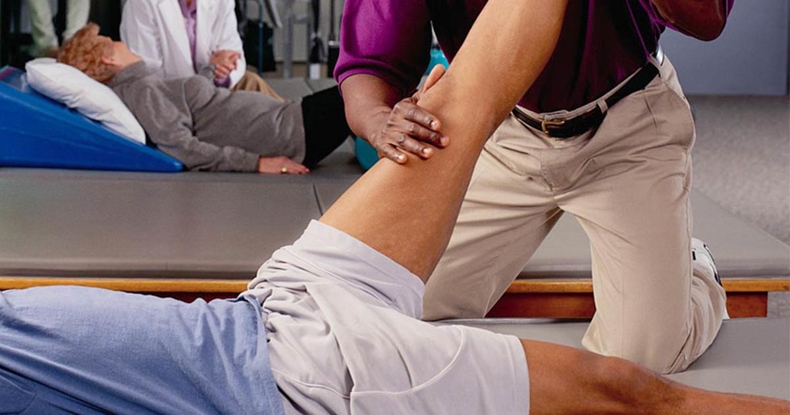What is Parkinson's Disease?
- Category: Health & Wellness
- Posted On:
- Written By: LVMC

Parkinson’s disease is a common central nervous system disorder that causes tremors and slow movement in adults aged 60 years and older.
Parkinson’s disease is a central nervous system disorder that affects more than 10 million people worldwide and an estimated one million people in the United States. This progressive disorder causes slow movement, tremors, stiffness, and loss of balance. Symptoms of Parkinson’s disease gradually worsen with time, though medications and other interventions can often improve symptoms and quality of life.
April is Parkinson’s Awareness Month. Knowing more about this condition and its symptoms can help you determine whether you or a loved one may need screening and treatment for Parkinson’s disease.
Read on to learn more about Parkinson’s and about how Lompoc Valley Medical Center can treat you for this condition.
What Are Symptoms of Parkinson’s Disease?
Symptoms of Parkinson’s usually differ from one person to the next, as not everyone will experience all symptoms or the same severity of symptoms.


Early symptoms of Parkinson’s are often subtle, come on gradually, and are mistaken for normal aging. Symptoms usually begin on one side of the body before progressing to both sides, though symptoms may be more severe on the side affected first.
What Causes Parkinson’s Disease?
Parkinson’s disease occurs when the neurons in the brain that control movement becomes damaged or die. The brain neurons affected by Parkinson’s produce dopamine—a brain chemical that plays a role in the movement, mood, and many other bodily functions.
Parkinson’s also affects nerve endings involved in norepinephrine production—a brain chemical that controls automatic functions in the body, including blood pressure, digestion, and heart rate.
Certain risk factors may increase your likelihood of developing Parkinson’s, including:
- Being aged 60 or older, as the risk for Parkinson’s increases with age.
- Being male, as men are more likely than women to develop Parkinson’s.
- Genetics, as having a relative with Parkinson’s makes you more likely to develop the disease.
- Trauma to the head, as some who have suffered repeated blows to the head, have developed Parkinson’s.
- Exposure to toxins, such as those found in foods and water and those used in farming and factories.
How Is Parkinson’s Disease Diagnosed?
There are no specific tests that can diagnose Parkinson’s, though your doctor may use various methods to determine whether you have this disease. Your doctor will review your medical history, talk to you or your family member about existing signs and symptoms, and perform physical and neurological exams. Your doctor may also order lab tests, brain ultrasound, MRI, and PET scan to rule out other medical conditions related to your symptoms.
In some instances, you may be given a medication called carbidopa-levodopa that converts into dopamine in the brain. If your symptoms improve after starting this medication, your doctor may confirm that you have Parkinson’s and initiate other treatments as necessary.
Can Parkinson’s Disease Be Prevented?
You may be able to prevent or reduce your risk for Parkinson’s with regular exercise and a healthy diet. Exercising regularly during your 30s and 40s may reduce your risk for Parkinson’s by at least 30%—particularly aerobic exercise, increasing heart rate, and protecting brain tissue.
Eating highly nutritious whole foods may also help prevent Parkinson’s, especially those with lots of nutrients that support brain health, including omega-3 fatty acids, antioxidants, magnesium, copper, and zinc. Fruits, vegetables, leafy greens, fish, nuts, seeds, and eggs are some of the many foods that contribute to good brain health.
Caffeine is also found to help prevent Parkinson’s disease, such as coffee, tea, and dark chocolate. Caffeine improves mood and increases alertness and concentration to reduce cognitive problems related to Parkinson’s. Studies show that people who consume caffeine regularly are at a 25% reduced risk of developing Parkinson’s, especially in high caffeine intake. Coffee, tea, and dark chocolate also contain high amounts of antioxidants that destroy free radicals contributing to poor brain health.
What Are Treatments For Parkinson’s Disease?
Medications and deep brain stimulation are the most common treatments for Parkinson’s due to the way they can significantly reduce symptoms. Medications can be used to increase dopamine levels in the brain and to reduce other symptoms.
Medications commonly used to treat Parkinson’s include:
- Carbidopa-levodopa, which converts to dopamine in the brain to improve movement, motor control, and mood. This medication may be taken orally or can be inhaled or infused.
- Dopamine agonists (e.g., pramipexole, ropinirole, rotigotine) mimic dopamine's effects in the brain.
- MAO B inhibitors (e.g., selegiline, rasagiline, safinamide) inhibit a brain enzyme called monoamine oxidase B that metabolizes dopamine.
- Catechol O-methyltransferase inhibitors (e.g., entacapone, opicapone) block an enzyme that metabolizes dopamine.
- Anticholinergics (e.g., benztropine, trihexyphenidyl), which reduce tremors.
- Amantadine, which reduces symptoms of mild, early-stage Parkinson’s disease.
Many of these medications may cause side effects, including nausea, hallucinations, confusion, insomnia, compulsive behaviors, constipation, and diarrhea. Talk to your doctor if these side effects are severe to the point that the benefits do not outweigh the risks of staying on the medication.
Deep brain stimulation involves having electrodes implanted into the brain that send electrical pulses, which dampen Parkinson’s symptoms and reduce involuntary movements, tremors, and rigidity. This treatment is usually recommended for advanced-stage Parkinson’s who do not respond to medications, including levodopa.
Deep brain stimulation comes with risks, including infection, stroke, and brain hemorrhage, and may reduce swimming ability. Talk to your doctor about all potential risks associated with this surgery when discussing your available treatment options.
Where To Find Quality Treatment For Parkinson’s Disease
Lompoc Valley Medical Center is home to a large team of medical providers trained and experienced in the assessment, diagnosis, and treatment of Parkinson’s disease. Visit our provider page today to make an appointment.






